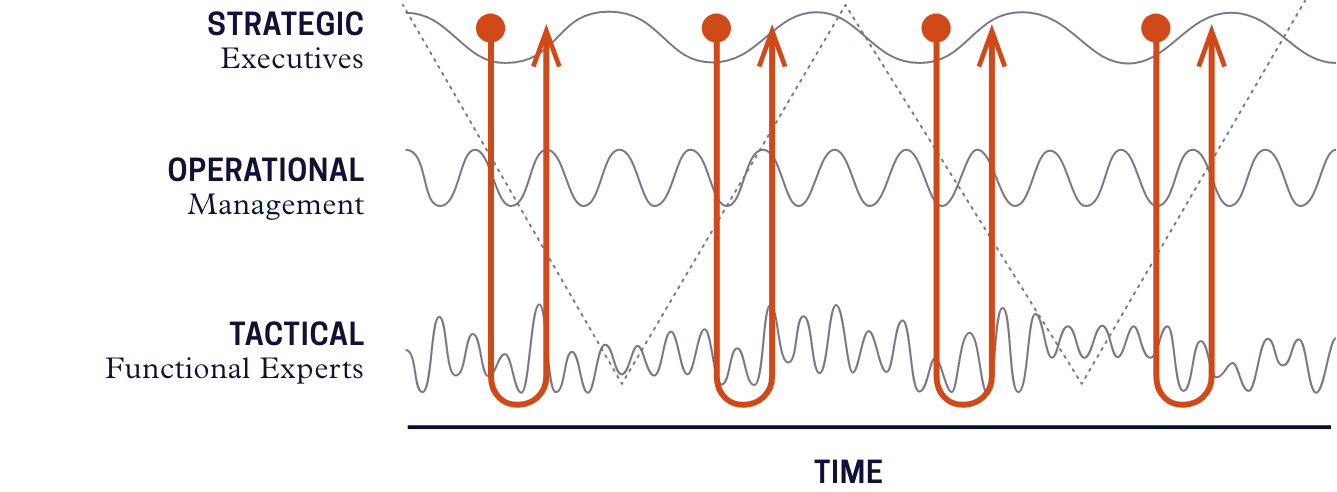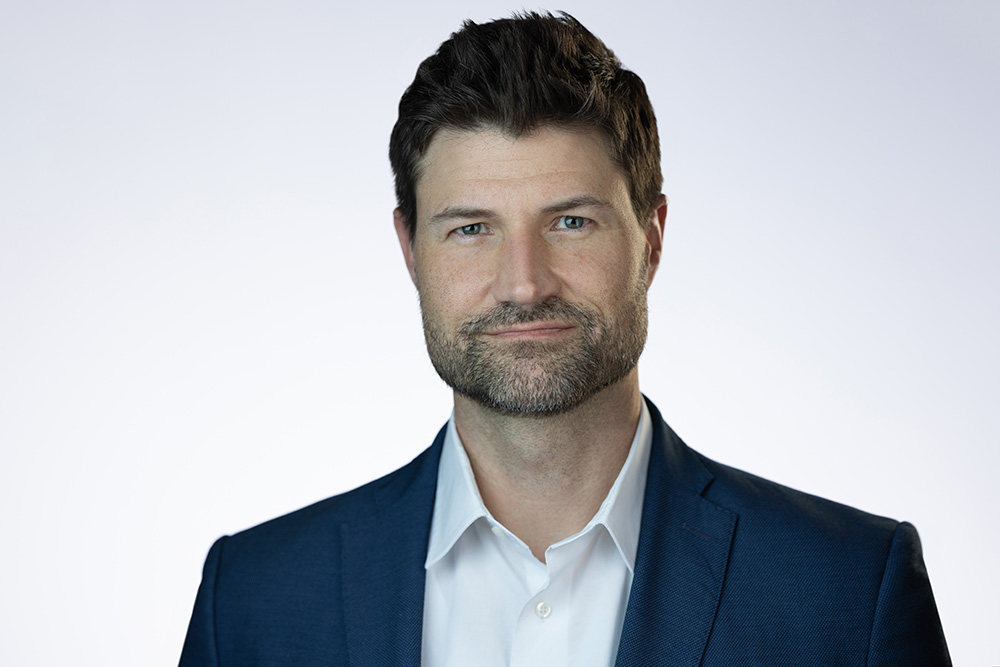Change is dangerous. Most organizational changes fail, and those failures have very real consequences. There is an endless supply of change models and resources to draw from, but they have done little to reduce the frequency of failure.
The fundamental reason why organizations have had lackluster results at making transformational change is due to the fact that any organizational change is highly complex, with many interdependent variables that undermine formulaic change plans that artificially simplify the situation. Rather than following a simplistic change process and hoping it works, we need to focus our attention on the fragile areas of change that pose the greatest risk to success.
Every successful organizational change has activity at three distinct yet interdependent levels:
STRATEGIC: High-level, cross-functional decisions that determine how a change impacts the long-term goals of the organization and impacts key stakeholders.
OPERATIONAL: Translation of the change from a concept to action through the coordination of activities and deployment of resources to achieve the objectives of the change.
TACTICAL: Concrete actions that shift behaviors, processes, and systems.

There are inherent challenges at each level, but the operational level poses the greatest risks to implementing sustained change. To mitigate those risks, you, as an enterprise leader, need to take four actions leading up to an organizational change.
RISK 1: Mid-level leaders are carrying such a heavy load that they deprioritize the change
ENSURE BANDWIDTH: Multiple research studies point to mid-level leaders as the “lynchpins” that determine the success of an organization. However, even more studies warn that these critical leaders endure the greatest strain and stress on a regular basis. Once you determine which mid-level leaders are critical to carrying out the essential operational tasks for an organizational change, you must reduce their task load in other areas to make sure they have the time, energy, and focus to prioritize the change appropriately.
DO THIS: Sit down with these key mid-level leaders in the early stages of the change and ask them to list out all of their current responsibilities in prioritized order (including supporting the organizational change). Then have them allocate 100 pennies across all of their responsibilities. If the leader allocates less than 25 pennies to the organizational change, you need to help them reprioritize to gain more bandwidth, or else the change will likely fail.
RISK 2: Without a regular check-in on progress, the change loses momentum
ESTABLISH RHYTHM: The key to achieving change is building enough momentum to overcome the friction of the status quo. The mistake many senior leaders make is that they believe a hard push in the early stages of a change will provide enough inertia to drive change. They grossly underestimate the power of the status quo to grind the change to a halt after the initial excitement and energy dissipates. Leaders must create a steady cadence of communicating the change, assessing the change, and driving the change forward.
DO THIS: In the early stages of change, set up a regular rhythm of accountability. Assign roles with defined responsibilities and expectations. Identify clear metrics to assess the progress of the change that will determine if these expectations are being met. Finally, establish a clear rhythm for accountable parties to come together to discuss the change and make adjustments as needed. Meetings to discuss tactical actions should take place regularly, while meetings to discuss operational-level coordination and resourcing should take place less often, and meetings to discuss strategic-level shifts should take place with even less frequency. But in all cases, there must be a predictable cadence to keep a pulse on each level and drive the change forward.
RISK 3: Key relationships, capabilities, expertise, or experience are missing that derail the change
ENGAGE THE NETWORK: Sustained change takes the form of a cascading wave across a network. When key people in that network are onboard and motivated to drive and make a shift, the change can almost feel effortless as it spreads from one group to another. Unfortunately, more often than not, key experts, informal leaders, and network influencers are never engaged and their lack of buy-in creates resistance that slows the change until it dies out, like ocean waves smashing on rocks.
DO THIS: Take the time to map out the network of key individuals and teams who will influence the success of the change. Examine both internal and external networks and write down:
- Who the key influencers are
- What matters to them
- How they will impact the change
- How they currently feel about the change
- Who can influence them to buy into the change
If you cannot answer one of these questions, you need to do some more intelligence gathering. From there, build out a plan to manage these stakeholders using this critical information and assign someone to own each relationship.
RISK 4: As the change begins to take shape, new issues are surfaced, but those issues are not voiced up to senior leaders and the change goes awry
ELICIT FEEDBACK: The more senior you are, the less likely that you are receiving unbiased feedback. Whether you realize it or not, there is a very real power differential between people leading change and those carrying it out. This power differential typically produces a “cone of silence” that is rarely penetrated by those on the frontlines who are attempting to tactically carry out the change. The senior leader rarely hears about any problems and assumes things are going to plan until the change crumbles under the weight of unacknowledged challenges.
DO THIS: Schedule regular times of direct feedback from people at all levels who are involved in executing the change. These feedback sessions need to be one-on-one and must be architected to minimize the power differential. Consider having them over a coffee or in an informal setting. Ask open-ended questions that force reflection and specific answers, rather than vague inquiries like, “How’s the change going?” that will likely produce useless input that may not align with reality. Instead, ask powerful questions that will provide you with the information you need to make critical adjustments to the plan:
- If you were in charge of this change, what is one thing you would have us do differently tomorrow?
- Let’s imagine this change fails. What do you think would be at the root of that failure?
- Hypothetically speaking, if none of us could take a day off until this change was successfully implemented, what would you have us do differently?
Change is essential but it is fraught with risk, particularly at the operational level of activity that involves coordination and resourcing. If you take the necessary actions early in a change to shore up your mid-level leaders and set them up for success, the likelihood of the organizational change delivering the results you need will skyrocket.



